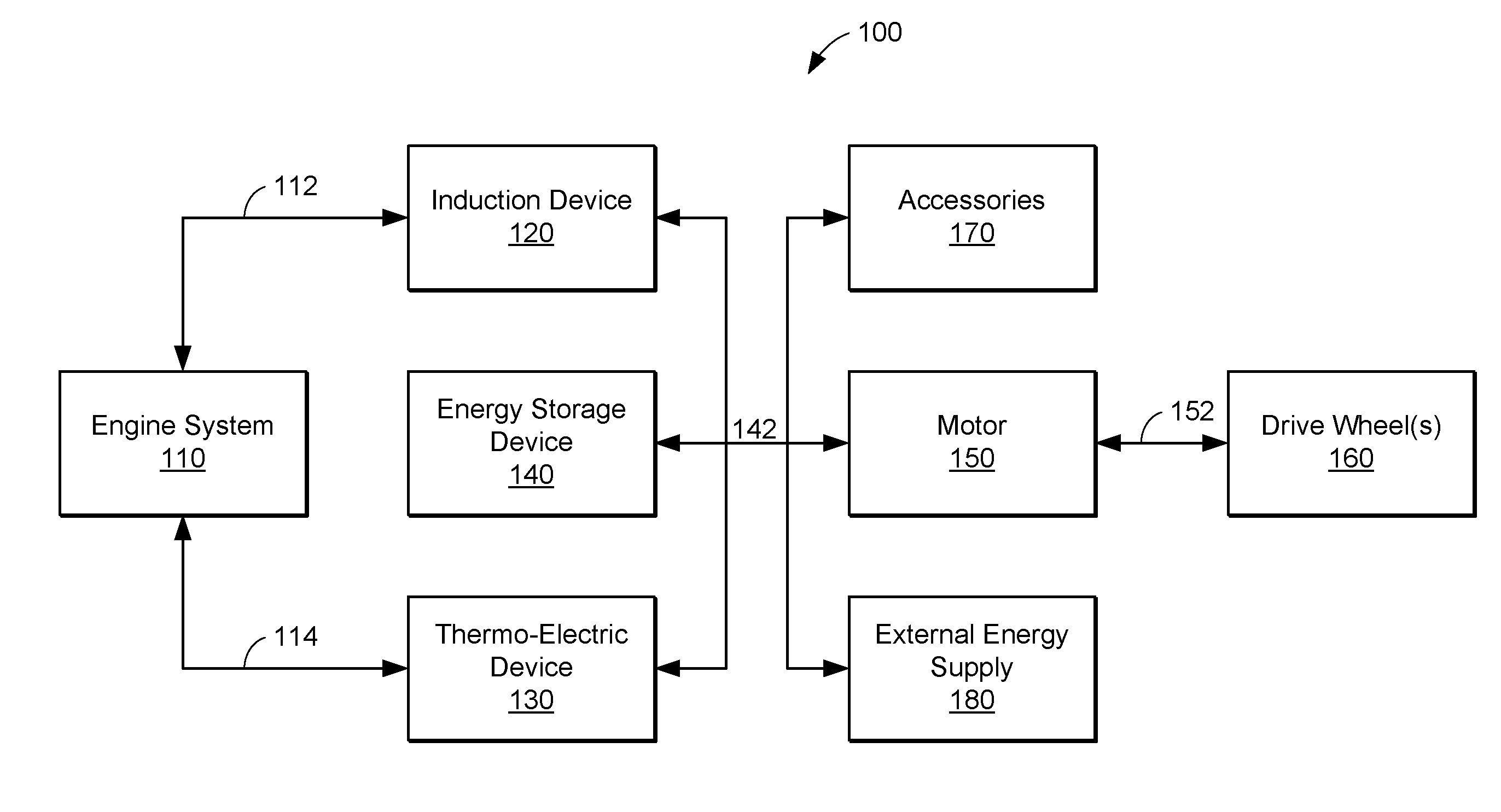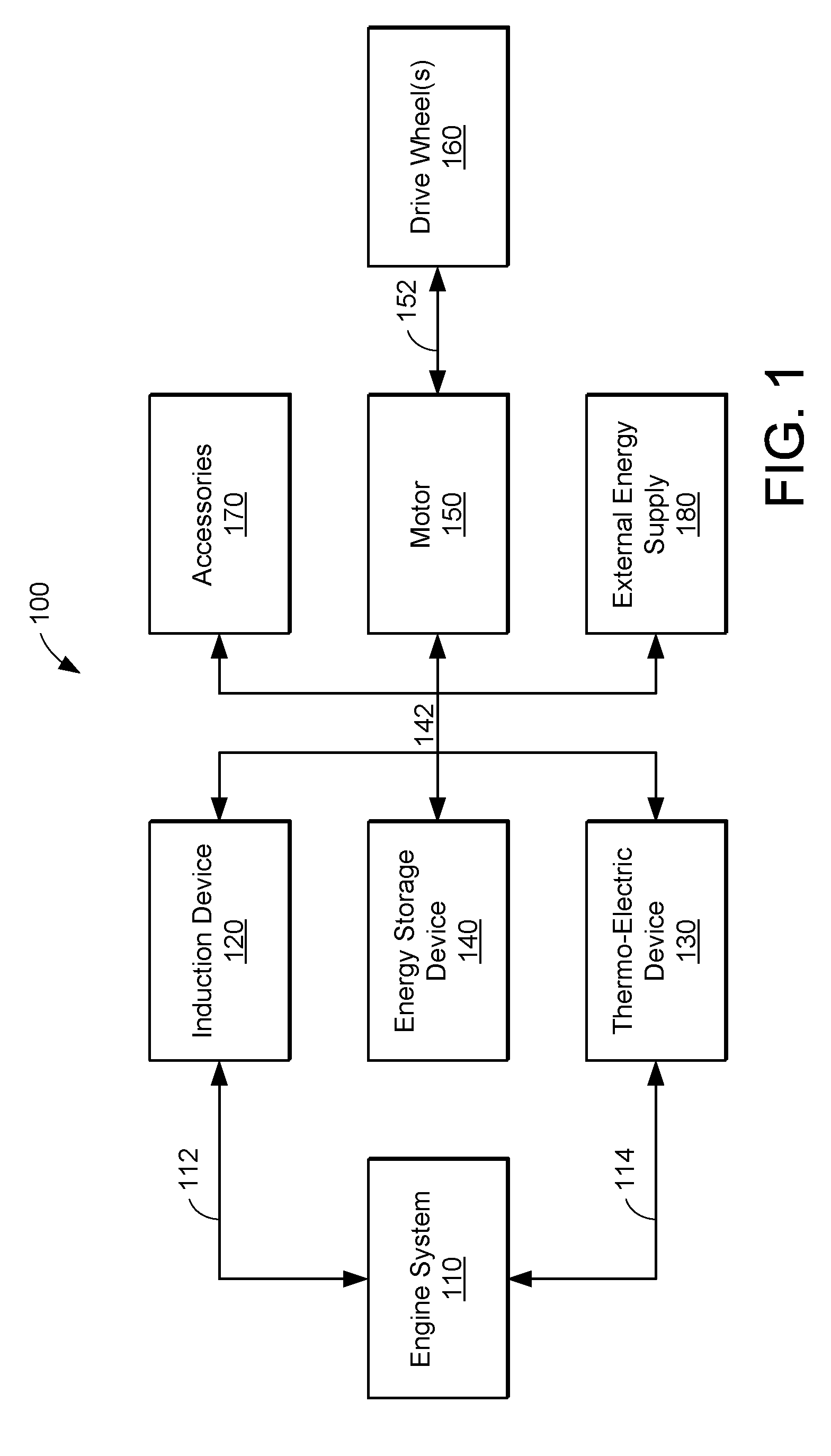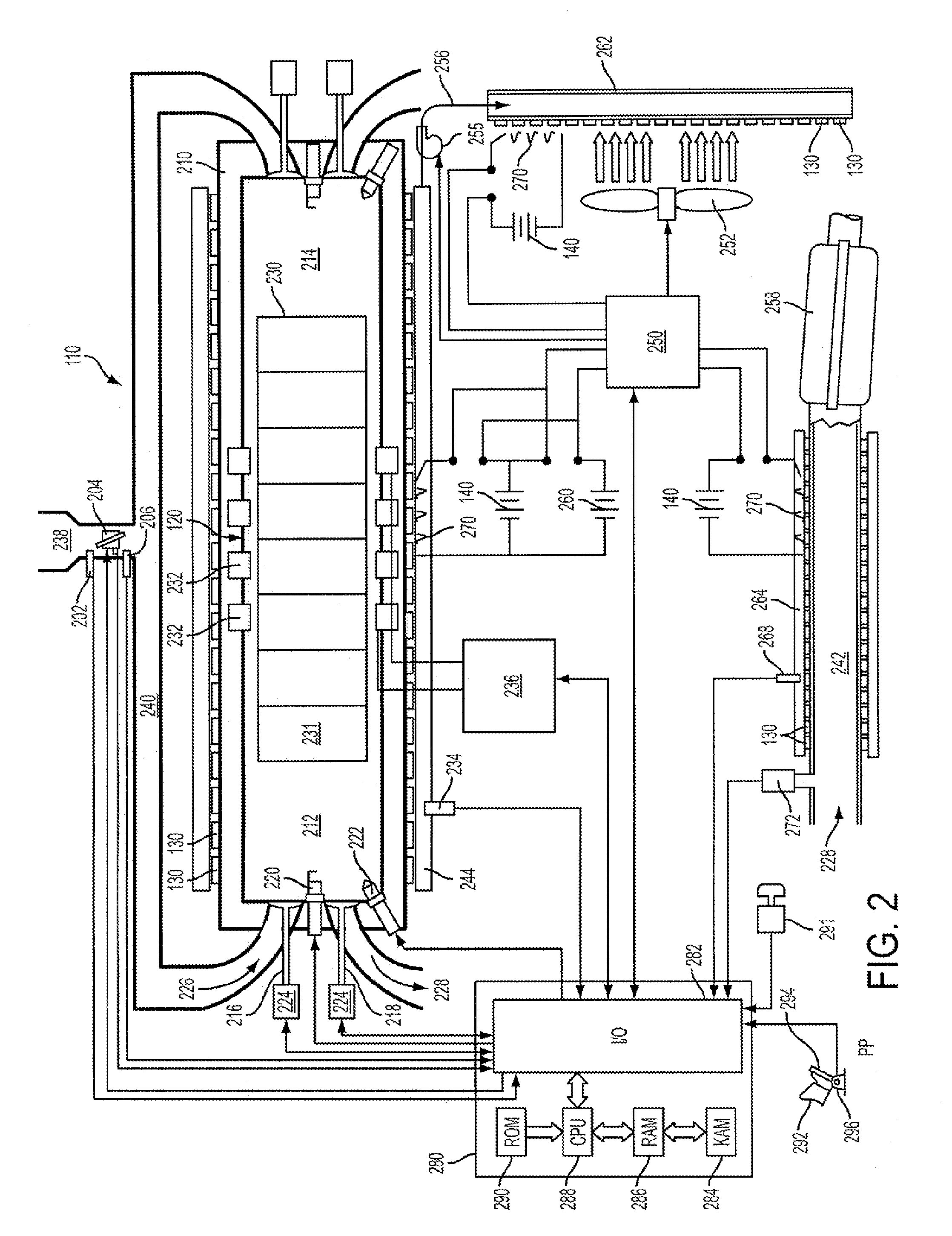Engine system having improved efficiency
a technology of engine system and efficiency, applied in the direction of electric motor starter, electric energy management, electric devices, etc., can solve the problems of excessive temperature conditions, potential thermal damage, and substantial inefficiencies that may remain, and achieve the effect of reducing high temperature conditions and efficient temperature rang
- Summary
- Abstract
- Description
- Claims
- Application Information
AI Technical Summary
Benefits of technology
Problems solved by technology
Method used
Image
Examples
Embodiment Construction
[0014]The present disclosure relates generally to a hybrid propulsion system for a vehicle such as an automobile. The hybrid propulsion system described herein may utilize the synergy between a fuel combusting engine, a drive motor, and one or more thermoelectric devices to achieve increased efficiency, lower products of combustion, and / or improved drivability, under some conditions.
[0015]In at least one embodiment, a full series hybrid vehicle configuration may be used that enables the engine to be operated independent of the requested wheel torque. For example, by providing the desired propulsive force via a motor, the engine may be operated in response to other operating parameters. As one example, operation of the engine may be varied in response to the temperature of the thermoelectric conversion system to reduce or prevent unsuitably high temperature conditions that may cause damage or decrease the lifecycle of the thermoelectric device.
[0016]Still other synergies may be reali...
PUM
 Login to View More
Login to View More Abstract
Description
Claims
Application Information
 Login to View More
Login to View More - R&D
- Intellectual Property
- Life Sciences
- Materials
- Tech Scout
- Unparalleled Data Quality
- Higher Quality Content
- 60% Fewer Hallucinations
Browse by: Latest US Patents, China's latest patents, Technical Efficacy Thesaurus, Application Domain, Technology Topic, Popular Technical Reports.
© 2025 PatSnap. All rights reserved.Legal|Privacy policy|Modern Slavery Act Transparency Statement|Sitemap|About US| Contact US: help@patsnap.com



